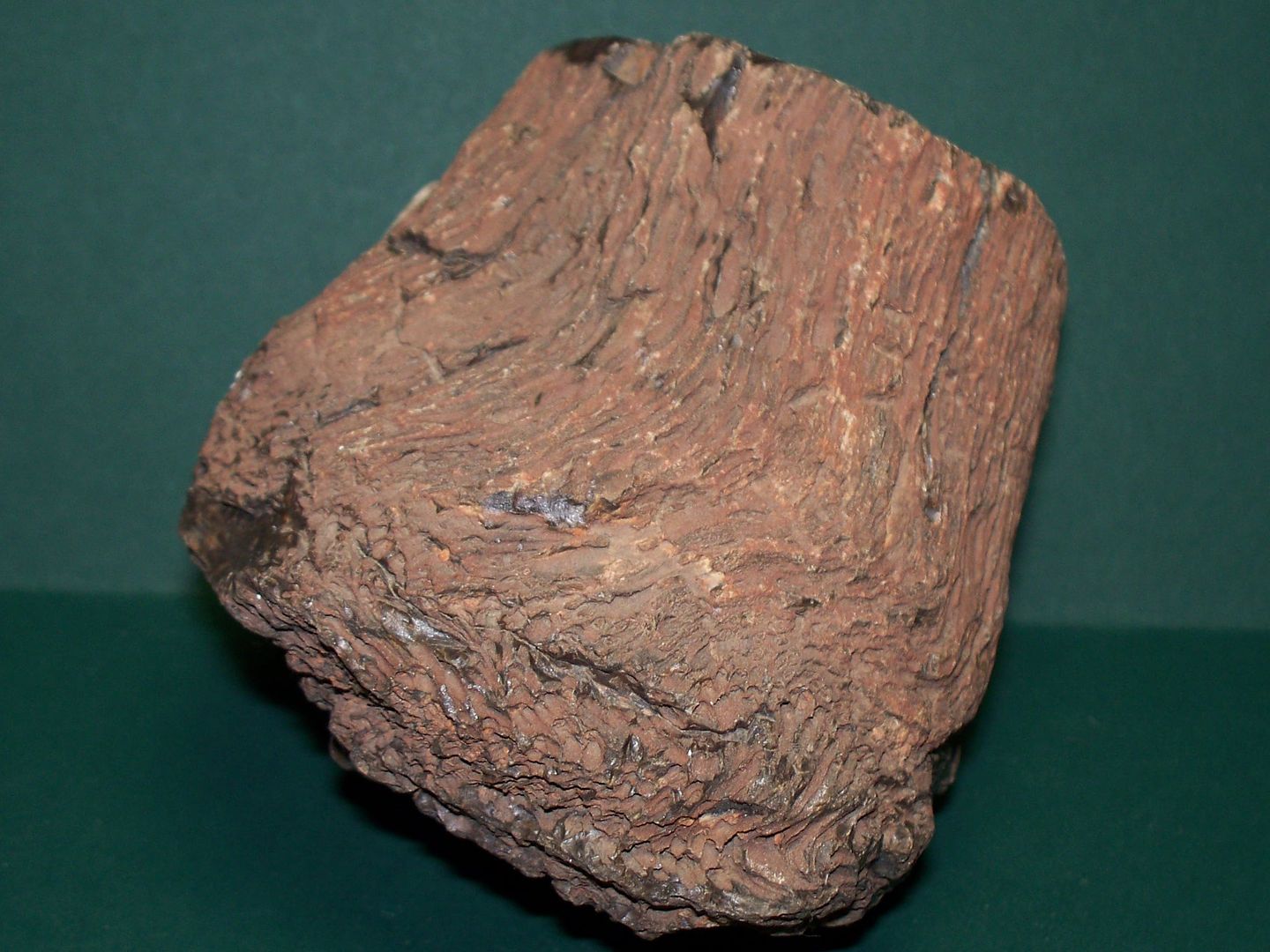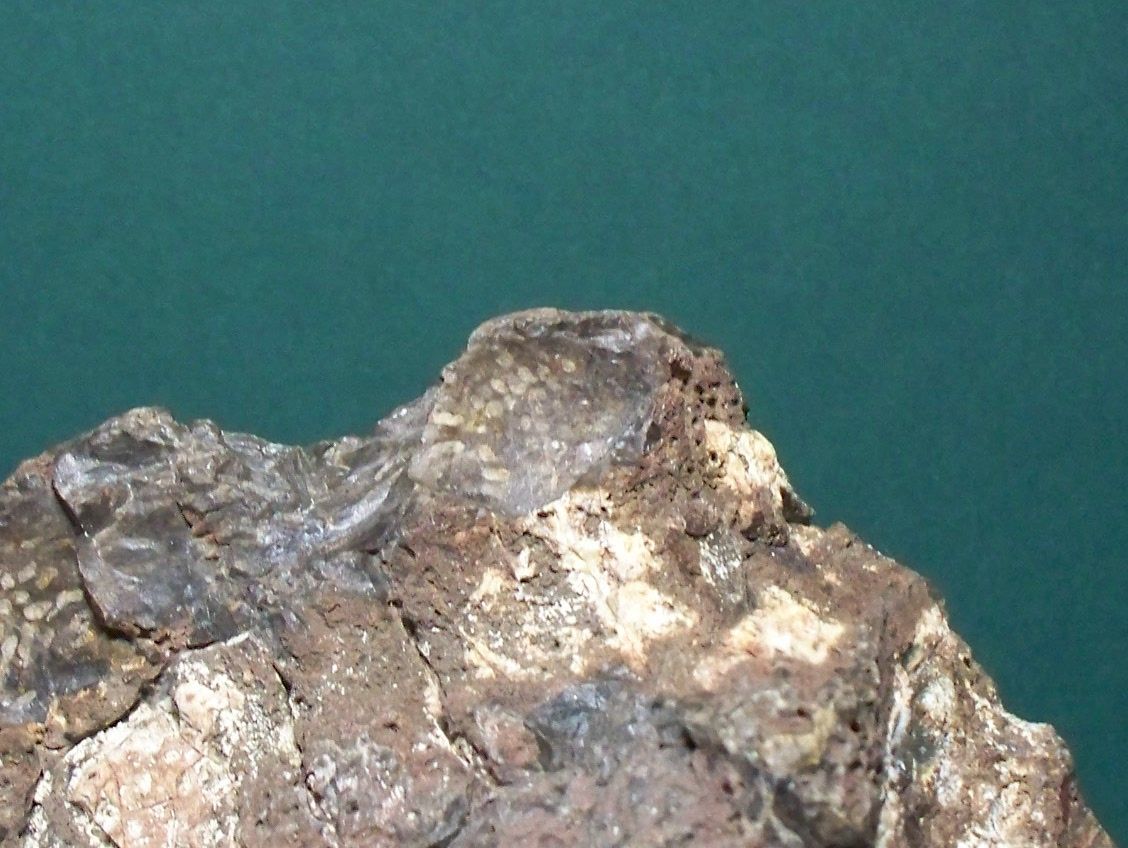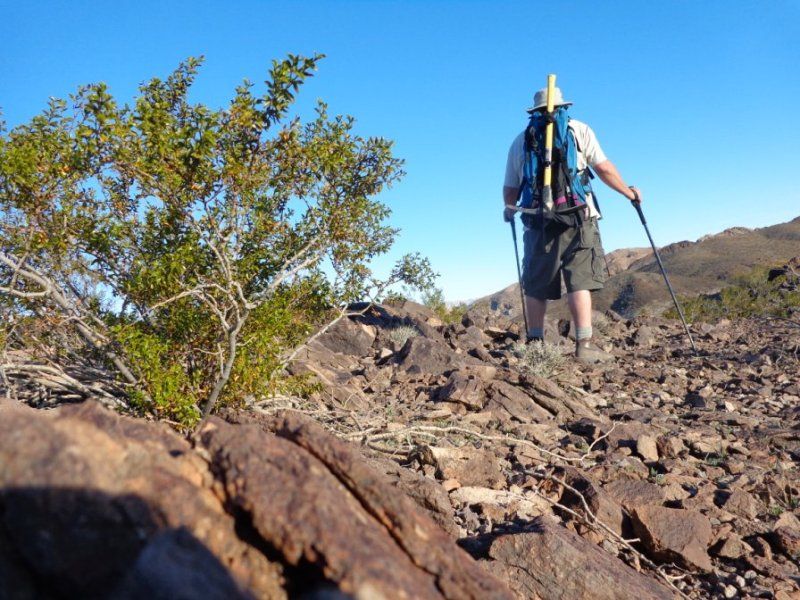Mark K
Cave Dweller 
Member since April 2012
Posts: 2,795 
|
Post by Mark K on Jan 30, 2015 18:06:16 GMT -5
I did an experiment where I put a chunk of Brenda jasper in some hydrochloric acid and tried to remove the varnish. Since it is an oxide, I figured that it may be possible to eat it off chemically. It did not touch the orange varnish. My next experiment is a chunk of this red jasper or agate in the acid and see if it comes off of this one. This one has black varnish on it.
|
|
Mark K
Cave Dweller 
Member since April 2012
Posts: 2,795 
|
Post by Mark K on Jan 30, 2015 21:02:11 GMT -5
Second phase of the test is done. The varnish was not affected but the red was leached out of the rock.
This is the same material as Bob's stalactite rock.
|
|
|
|
Post by rockpickerforever on Jan 30, 2015 21:43:07 GMT -5
Interesting. Was wondering what, if anything, would take that stuff off. So you say the red had a meltdown? That's not a good thing.
|
|
Mark K
Cave Dweller 
Member since April 2012
Posts: 2,795 
|
Post by Mark K on Jan 30, 2015 22:29:17 GMT -5
No. No it isn't. The chunk is like the one Bob found crossed with the vug of it you found, only not as awesome. I suspect that if I were to lightly grind, it would bring the red back.
|
|
quartz
Cave Dweller  breakin' rocks in the hot sun
breakin' rocks in the hot sun
Member since February 2010
Posts: 3,356
|
Post by quartz on Jan 30, 2015 23:32:46 GMT -5
Mark, could you expand a little on what "desert varnish" is to you? Here, stuff found [harder quartz-jasper mtls.] on the Oregon desert is "polished" by years of exposure to wind and sand, giving a fair natural polish. That's what we call desert varnish.
Larry
|
|
Mark K
Cave Dweller 
Member since April 2012
Posts: 2,795 
|
Post by Mark K on Jan 30, 2015 23:38:42 GMT -5
After a bit of research, it seems that the desert varnish is a combination of manganese oxide or iron oxide in symbiosis with native clay which bakes onto the rock over a long period of time. Due to the oxide part of the formula, I figured that there was a good chance that the oxide would dissolve in the acid. It does not.
There is also a problem with your description of varnish. Your version does not account for the addition of the varnish to the rock. If it was mere polishing, the rock would be smoothed, yet retain its natural look without being obscured by said varnish.
|
|
quartz
Cave Dweller  breakin' rocks in the hot sun
breakin' rocks in the hot sun
Member since February 2010
Posts: 3,356
|
Post by quartz on Jan 31, 2015 0:01:52 GMT -5
Just a term applied a long time ago, not by me, no relationship to an applied finish. Northwest colloquialism I suppose. Very different than what you are dealing with, sounds like you have a tough surface to remove. Thanks for the explanation.
Larry
|
|
|
|
Post by captbob on Jan 31, 2015 0:05:58 GMT -5
How about a picture of what you are talking about. Is it as bad as the stuff on the stone canyon in my thread?
Why are you calling it "varnish"?
ETA: never mind, Googled it.
|
|
Deleted
Deleted Member
Member since January 1970
Posts: 0
|
Post by Deleted on Jan 31, 2015 16:23:22 GMT -5
Mark K please see captbob's stone canyon jasper cleanup thread. forum.rocktumblinghobby.com/thread/69368/stone-canyon-jasper-questionquartz come on down and we'll go offroad. I'll show you what we call desert varnish. In some areas every single stone sitting exposed on the surface has a brown coating, making even the finest jaspers and agates seem fugly. Only stationary stones have it. Alluvial stuff does not. Chip a corner off to see the beauty. As for cleaning it off, I think Capt. Bob solved that in his thread linked above!
|
|
|
|
Post by jakesrocks on Jan 31, 2015 17:02:11 GMT -5
A picture is worth a thousand words. Perhaps some pics of various types of desert varnish will explain what is being discussed. After supper I'll get a couple pics of a heavily varnished piece from the So. Cal desert to post.
|
|
|
|
Post by jakesrocks on Jan 31, 2015 19:45:40 GMT -5
This is a piece of petrified palm from the Green Ash Hills, east of Calico Ghost Town in the California deserts. The reddish brown surface color is typical of the desert varnish from this area. I've also seen pieces come from this area with dark brown and black surface varnish. I would guess that the color all depends on how many centuries the material has laid on the surface exposed to the sun and elements.  No telling how many hundreds of rockhounds before me that had walked right past this piece without giving it a second look. I picked it up and turned it over. That's when I saw a couple of small spots showing palm fiber. Note that the side that was facing down is much lighter in color.  |
|
quartz
Cave Dweller  breakin' rocks in the hot sun
breakin' rocks in the hot sun
Member since February 2010
Posts: 3,356
|
Post by quartz on Jan 31, 2015 23:09:44 GMT -5
We appreciate this discussion, like jakesrocks says, "a day spent without learning something new, is a day wasted. Ours wasn't wasted, that is some formidable stuff. Never knew there was an "official" desert varnish. Here in fungus corner we don't have that problem.
|
|
tothesummit
starting to shine!

Member since August 2012
Posts: 37
|
Post by tothesummit on Jan 31, 2015 23:39:02 GMT -5
I never really thought about trying to remove the desert varnish. Pretty much everything that sits on the surface for eons ends up coated in it here. Here is a picture of me out rockhounding 2 years ago on Superbowl Sunday. Notice the dark brown color of the rocks around me. It doesn't really matter what is on the inside, everything that has sat on the surface for long periods of time looks like this on the exposed surfaces. Often you can just roll them over and clean the dirt off the underside to get an idea of what you have. I usually whack off a chip with my hammer to create a small window. My rock hammer gets a lot of use when I'm out collecting. Oops, forgot the picture!  |
|
|
|
Post by captbob on Feb 1, 2015 0:15:02 GMT -5
From these pictures, desert varnish doesn't seem to be the same thing as the manganese coating that is on the stone canyon jasper. I have no idea if the two processes I tried on the stone canyon would remove the desert varnish.
|
|
|
|
Post by snowmom on Feb 1, 2015 5:20:21 GMT -5
watching with interest.
|
|
Mark K
Cave Dweller 
Member since April 2012
Posts: 2,795 
|
Post by Mark K on Feb 1, 2015 9:48:00 GMT -5
The reason I wanted to try this is that I have a nice chunk that looks good and would not make a good cutting piece. It is really vuggy and full of crystals like Bob found only not nearly as awesome. It is covered all of the way with varnish so I would have to assume that it got covered and rolled over countless years ago to get hit on the other side as well.
|
|
|
|
Post by captbob on Feb 1, 2015 10:03:47 GMT -5
Did you try the super iron out? It may work. Found it at Home Depot in the plumbing section. Read Wal*Mart carries it as well. I'd give it a shot in hot water before going through all the hot plate stuff. Worked just fine for me without keeping it heated. Watch the fumes!!!
|
|
Mark K
Cave Dweller 
Member since April 2012
Posts: 2,795 
|
Post by Mark K on Feb 1, 2015 10:11:52 GMT -5
At this point with the house full of heathens, I think I am going to hold off until it warms up outside so I can do it where I don't have everyone all over my experiments.
|
|
|
|
Post by jakesrocks on Feb 1, 2015 10:31:22 GMT -5
For those with a Facebook account, there's a fairly new group that deals with nothing but specimen cleaning. I just joined them last night. Lots of cleaning info. www.facebook.com/groups/657122621047167/Someone mentioned using Iron Out with a hose from a fish tank pump in the solution to keep agitating the mix. |
|
Mark K
Cave Dweller 
Member since April 2012
Posts: 2,795 
|
Post by Mark K on Feb 1, 2015 15:27:38 GMT -5
I prefer to avoid HF if possible. HF is very dangerous and when it burns you, you don't know right away. You find out the next day.
|
|